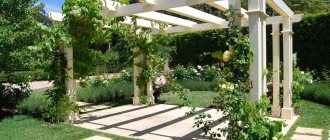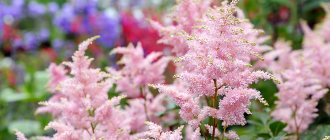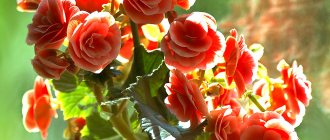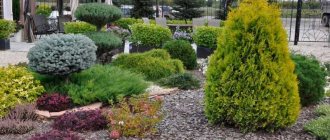The annual flowering vines listed in this article are good because they grow quickly, bloom profusely, have beautiful foliage, create an openwork curtain, they are light in weight and therefore you do not need to invent something special to support them.
In addition, they are easy to plant, or rather sow. Moreover, sowing can be direct in open ground, or they can be planted by seedlings. In the case of seedlings, the liana will bloom earlier, but you need to remember that only one liana is germinated in one glass and it is planted very carefully in open ground so as not to disturb the earthen ball and not damage the root system.
These vines do not require fertilizing or any other tricks, and therefore they will grow well even with inexperienced novice gardeners. And another bonus: many of these vines are self-seeding and will sprout on their own within a year!
Convolvulus purple
Purple bindweed
This is a plant of the Ipomoea genus of the Convolvulaceae family. Bindweed grows very quickly and does not require any care (although it does not like drought).
Its flowers are gramophone-shaped and come in different shades of blue (mostly sky blue), purple, pink and white. There are also varieties with multi-colored flowers and even variegated foliage (leaves with light spots).
The flowers open only in the morning - hence the other names of bindweed - Morning Glow and Morning Glory. The vine climbs up to 5 meters or more and grows best in a sunny location.
Note: if you sow annual morning glory this year, next season you will be pleasantly surprised by the sprouting of your self-seeded bindweed in almost the same place where the parent plant was a year ago. Generally speaking, this is a plant for beginner gardeners: it sprouts easily from seed, but it may happen that you have to wait quite a long time for flowering - for this reason, do not delay, but plant right now!
What annual flowering vines can be planted?
There are time-tested climbing annuals that will never let you down. They are very unpretentious and do not require special attention.
Nasturtium
Climbing nasturtium sometimes grows up to 3 m over the summer; you just need to tie up its fragile stems in time. Beautiful shiny, almost round, leaves very tightly cover the support; large flowers (from 3 to 6 cm in diameter) of sunny shades stand out brightly against their background: yellow, orange, red. They have a special aroma. After flowering, fruits are formed. I leave the largest of them for seeds. Nasturtium does not like the scorching sun, so it is better to plant it in an area that is in partial shade during the hottest time of the day.
morning glory
I have been using morning glory (convolvulus) for a long time to decorate a fence near a well with a water meter. These flowers give rise to emotions and for a moment take me back to childhood. Its leaves look like hearts, and its flowers look like a funnel.
At first I grew morning glory purple: it blooms with white, purple or blue flowers. But her flowers are open only in the morning (until 11 o’clock), and then they close. May remain open only on cloudy days.
About four years ago I planted morning glory with delicate blue large flowers (up to 10 cm). She kept her flowers open until three o'clock in the afternoon, but did not remember the name of the variety. If you are familiar with this variety, please write the name in the comments.
Sweet pea
Sweet peas delight not only with beautiful flowers that look like fluttering butterflies, but also with a delicate aroma. A sweetish, unobtrusive smell comes from small, irregularly shaped leaves. The climbing annual grows up to 2 meters in height. For abundant and long-lasting flowering, faded flower stalks must be torn off to prevent the formation of pods.
In addition to these well-known plants, every year I buy seeds of new annual climbing flowers or “spot” them in the gardens of other gardeners. Here are some of my favorites.
Azarina
Azarina climbing (Maurandia) is liked for its long and abundant flowering - from early summer until frost. Sown in open ground, it grows slowly, so it is better to grow it through seedlings. In order for the plant to bloom in June, the seeds must be sown in winter, 10-12 weeks before planting the seedlings in open ground.
It is a very heat-loving plant, so if the weather is cool at the beginning of summer, it develops slowly. But, as soon as real warmth sets in, in a short time it entwines the arch with its highly branching shoots, reaching 3-3.5 m in length. The small leaves of azarina resemble ivy, and the flowers resemble bells. There are varieties with purple, blue, pink and white flowers.
Caring for azarina involves regular feeding with a predominant content of potassium and phosphorus after the start of flowering.
Thunbergia
One of my friends purchased Thunbergia at the market at the end of last spring as an already formed plant. She was told that it grows up to 2 m in height, so she did not plant it in the ground, but placed it in a large pot supported by three bamboo sticks. Soon the plant entwined them tightly and became covered with many very bright yellow flowers with a dark brown center. Thunbergia bloomed until the end of September. It turns out that it comes in a wide variety of colors: red, yellow, orange, violet, blue, magenta, lilac, white and even blue. By next season I also want to grow Thunbergia seedlings of different varieties. These plants are great for attracting butterflies and pollinators, giving your garden a special warmth and glow.
Popular varieties: "Susi Weib mit Auge" (with white flowers), "Susi Gelb mit Auge" (with yellow flowers) and "Susi Orange mit Auge" (orange).
Before flowering begins, it needs moderate watering, and during it - abundant and frequent. For more abundant flowering, it is recommended to remove weak side shoots, but which do not form buds.
Quamoclite variegated (Ipomoea pinnate)
Quamoclite variegum
Another fast-growing vine, Quamoclite variegum produces vibrant flowers in shades of red, pink or white. It also has beautiful "feathered" foliage.
Like its relative, morning glory, quamoclite flowers close during the day. The vine can easily climb 5 meters or more. This vine grows best in a sunny location protected from the wind.
Note: variegated quamoclite is easy to sow by direct sowing into the ground, but in this case the flowering period may be slightly delayed. In general, they bloom from early August to October. For good development and abundant flowering, this vine needs moderately fertile soil.
If the soil is very fertile, or you overfeed the quamoclite with nitrogenous fertilizers, you will get lush foliage, but whether the vine will bloom is a question.
Annual vines that are grown by direct sowing into the ground
Most often, easy-to-care vines that do not require much labor are grown in gardens by simply sowing seeds in the ground in May. These are nasturtium, sweet pea, common bindweed and others.
Sweet pea or sweet pea / Lathyrus odoratus
A popular garden plant that has been used for vertical gardening in Russian gardens for many years. The popularity of sweet pea (Lathyrus odoratus) was ensured by its unpretentiousness in cultivation, abundant flowering and the delicate beauty of its flowers.
More than a thousand varieties of sweet peas have now been bred, grouped into 16 different groups, which differ in color, height and flowering time. You can choose a variety of sweet peas for any corner of the garden.
Sweet peas themselves are very unpretentious; they can withstand temperatures as low as -5°C, so they can be sown in the ground as early as early May. If desired, sweet peas can be grown through seedlings, which are sown in March.
Sweet peas in a vase
Prickly carp, or lobed echinocystis / Echinocystis echinata
Echinocystis echinata is perhaps almost the first vine that began to be used for decorating village hedges. Easily propagated by self-sowing, it independently spread throughout vegetable gardens and orchards. For its growth rate (lashes up to 6 m long) and prickly fruits that can “shoot” seeds and look a little like cucumbers, it is popularly nicknamed “mad cucumber.” The flowering of the thorny plant is also quite beautiful; at the moment of mass blooming of small white flowers, the plant is covered with a wonderful “white foam”.
Echinocystis is sown before winter; if desired, Echinocystis seedlings can be planted in the spring.
Bindweed, or “day beauty”, convolvulus / Convolvulus tricolor
Most garden vines are quite large plants that take up a lot of space and require support, but bindweed, or convolvulus, is not like that. Tricolor bindweed or convolvulus tricolor (Convolvulus tricolor) is a relatively small groundcover annual vine, with stems up to half a meter long. But its flowers are large, bright, pink, blue or light blue, open only in good weather. It is propagated by direct sowing into the ground in the spring, but if desired, it can also be grown through seedlings.
Bindweed tricolor in the garden
It is interesting that the well-known weed bindweed with white or pink flowers, weaving along the fence or among our favorite flowers is field bindweed (Convolvulus arvensis) - a perennial plant that rises to a height of up to a meter. And in one place it can grow annually for 50 years!
Large nasturtium / Tropaeolum cultorum and Canary nasturtium / Tropaeolum peregrinum
Another vine that is not distinguished by its powerful growth, but is very decorative, is nasturtium (Tropaeolum cultorum) . There are many ampelous varieties suitable for growing both in containers and on a support. Less known is the foreign nasturtium, or as it is often called the Canary nasturtium (Tropaeolum peregrinum) , but meanwhile it is a stunningly beautiful annual vine, with stems up to 3 m long. It is quite popular in Europe, but is still rare here. The unusual flowers with a ruffled edge look like small yellow canaries. Unlike large nasturtium, which is sown immediately in open ground, this heat-loving “Canary” requires sowing for seedlings. They are sown in February, and in May, when the threat of frost has passed, they are planted in the ground.
Beautiful nasturtium: 5 reasons to plant it in your dacha + photos and recipes with nasturtium
Foreign nasturtium, or Canary nasturtium, Tropaeolum peregrinum
Moonflower - Lunar miracle / Calonyction, Ipomoea
So far, moonflower is also not very popular among gardeners. The most decorative species is the spiny moonflower or moonflowering morning glory (Calonyction aculeatum, Ipomoea bona-nox) - a herbaceous vine up to 3 m in height, suitable for decorating well-lit areas of the garden. It blooms from July until frost with large fragrant white flowers that bloom at night and fade in the morning, which is why the plant got its name.
Sow in May in a permanent place; before planting, the seeds are scarified or soaked in warm water for about a day.
Moonflower (Colonyction album)
Cypress vine, quamoclite
Cypress Creeper
Cypress creeper produces colorful flowers in shades of red, pink or white. This quamoclite also has beautiful foliage.
Like Morning Glory flowers, Cypress creeper flowers also close during the day as the hottest part of the day approaches. The cypress vine develops a vine up to 5 meters or more in length and grows best in full sun.
Note: this quamoclite is easy to sow by direct sowing in the ground, but be prepared to wait 4 months for flowering; but in a warm autumn it will bloom until October.
Climbing plants for the garden
Passionflower
Passion flower is a beautiful climbing plant for the garden, with intricate patterns of stems and beautiful flowers.
It is a perennial in warm climates and an annual plant in colder zones; it grows quickly and produces magnificent flowers. Does not like soil that is too wet, so plant it in a sunny location.
Read also how to grow Chinese lemongrass!
Hyacinth beans
The thin, curved bean pods are tropical hyacinth beans. Flowers bloom against a backdrop of purple-hued foliage as the air begins to feel cool. Purple bindweed (“Morning Glory”). To create a private flowering spot, grow purple bindweed (morning glory) on a trellis. Or “throw” climbing morning glory over a net.
This fast-growing annual climber produces a profusion of tube-shaped flowers that open in the morning and usually close in the afternoon. Morning Glory is self-propagating, so don't be surprised if you see this plant in your garden next year. Plants grow up to 3.5 meters in height.
Climbing plant "Black-eyed Susan"
Add a splash of color to your summer garden by planting fast-growing Black-eyed Susan (Thunbergia alata). Most varieties bloom yellow and orange. 'Little Susie' produces unusual white flowers with chocolate purple centers. This docile plant climbs along a trellis, mesh or pole. It can be either annual or perennial, depending on the climate.
Clematis
Clematis
Few climbers offer such a wide range of colors as clematis - white, pink, blue, purple, yellow, burgundy, and even striped flowers adorn this plant. The shape of the flowers of this perennial plant is also very diverse: double, single, with frills in the middle; Sizes and flowering times also vary.
Recommendations!
Gardener
Ask a Question
In small yards, plant dwarf varieties in containers or along the porch. Most clematis grow best in full sun in moist, well-drained soil.
Campsis rooting
Campsis
This fast-growing perennial vine of the begonia family can reach a height of up to 12 meters. Butterflies love orange, red or yellow flowers, which form showy clusters that stand out against the small, dark green leaves. Loves sun or shade, but the most beautiful flowers are in sunny places. This woody plant becomes very heavy, so it must be planted near a sturdy structure.
Climbing plant Maiden grape
Maiden grapes
Maiden grapes are famous not for their flowers, but for their spectacular, rich red foliage, which becomes so in the fall. Its purple fruits attract birds but are poisonous, so plant this plant in an area that is difficult to reach by people and pets.
Wild grapes
In autumn, wild grapes become noticeable with dark green foliage that gradually turns red. This plant, native to North America, is very vigorous - it rises to a height of up to 15 meters.
Ivy
This variegated foliage plant grows well in hanging baskets, can grow as a trailing plant, or can be trimmed to a shape. He needs partial shade. The soil should be evenly moist and the humidity high to discourage spider mites. This plant also grows as a trailing plant outdoors.
Thunbergia winged
Thunbergia winged
Thunbergia winged has such a funny appearance that it would be wrong not to mention it in our selection. Its flowers with a dark center (the color of dark chocolate with a purple tint) can have yellow, orange, white and apricot petals. Thunbergia alata can grow up to 2 meters in length and grows best in full sun.
Note: in regions where there is no frost, winged thunbergia grows as a perennial. New varieties have also been developed in which the center of the flower is not at all dark.
Kobeya climbing
Climbing kobeya
Charming and quite rare in our gardens, climbing kobeya produces creamy white flowers that eventually turn lavender-purple. The flowers are fragrant and appear throughout the summer and fall. The liana can reach a length of 3.5 meters. The climbing kobea loves the sun.
Note: in regions where there is no frost, climbing kobeya is an evergreen perennial, and in this case, climbing kobeya is capable of developing a whip up to 12 meters long!
Fragrant climbing plants
Nothing compares to spending time on the terrace under the arches of climbing plants that provide shelter from the sun and are gently fragrant. We invite you to get acquainted with these fragrant plant varieties.
Jasmine
Jasmine
A rare plant that surpasses jasmine in beauty and aroma. This rather unpretentious climbing plant blooms richly with star flowers, the scent of which can be felt far from the plant itself. Most jasmines bloom in the spring, but some, such as the Arabian jasmine, bloom throughout the warm season. The plant grows best in full sun or partial shade in moist, well-drained soil rich in organic matter. Gardeners sometimes grow jasmine as a houseplant.
Sweet pea
Plant this plant in the shade, and sweet peas will delight you with their beautiful flowers that exude a pleasant aroma. Depending on the climate, it can be either annual or perennial.
Autumn clematis
Autumn Clematis
Even in the shade, autumn clematis will produce multiple white, star-shaped flowers. In summer and autumn, it exudes an intoxicating aroma, so you can plant it near the front door or near the gazebo. Under certain conditions, clematis grows up to 6 meters.
Honeysuckle - a climbing plant for the garden
Honeysuckle
This unpretentious perennial climbing plant (Lonicera) blooms in a variety of attractive flowers in various shades - pink, yellow, red. Honeysuckle mixes well with other plants; intertwined with shrubs, perennials and annuals. It blooms all summer and rises up to 7.5 meters.
Sweet pea
Sweet peas
Note that, unfortunately, not all varieties of sweet peas emit a strong aroma, but they all bloom with beautiful flowers and the color palette of sweet peas is presented in almost every color - from white to almost black.
The vines can grow up to 2 meters in length. Sweet peas love sun, although partial shade will do just fine.
Note: In hot climates, sweet peas may scorch in an open, sunny spot, so it is best to plant sweet peas in a location that receives shade during the midday and hottest hours.
Fire red beans
Fire Bean
A magnificent vine that grows quickly and produces excellent fruit. Throughout the summer, fire beans will delight you with red-orange flowers.
The length of the whip can reach 3 meters or more. Beans grow best in full sun. For fun, you can plant these beans near the corn - this way you will have a whole “jungle” where children will happily play.
Common dolichos or hyacinth bean
Dolichos vulgaris
Dolichos or hyacinth bean will delight you with fragrant lavender flowers throughout the summer. And then the vine will produce burgundy-purple seed pods!
And one more undeniable advantage: when the seeds are ripe, you can easily collect them yourself and, when the cold weather recedes, you can plant dolichos again. It would be unfair to ignore the foliage of this vine: it is also magnificent! Are there many plants whose leaves have purple veins?
The vine can reach a length of 5 meters and this vine grows best in a sunny place.
Note: Interestingly, in regions where frost does not occur, bean hyacinth is a perennial. Other names: lobia or Egyptian beans.
Tree pliers - a plant for open spaces
The liana received the name “tree plier” due to its parasitism on trees. The plant uses them as a support, while the branches are partially entwined and partially pierced through by a powerful vine. As a result, the tree dies. This quality can be used if unnecessary trees grow on the site that cannot be cut down and uprooted.
The tree plier reaches a length of up to 10 m, but most often the shoots do not exceed a length of 5 m. The foliage is abundant, densely located along the vine, the inflorescences are ugly, but the orange-red berries provide additional decorativeness.
Wood pliers are easy to care for, are not afraid of frost, and patiently tolerate drought. It can be planted at a distance from garden and ornamental trees, and not insulated for the winter.
Several varieties of the plant are known, the most popular being the corymbose wood pliers and the braided wood pliers.
Nasturtium
Nasturtium
Nasturtium offers vibrant flowers in shades of red, orange, yellow, apricot and cream.
Nasturtium flowers are edible and can be used, for example, in salads. If the nasturtium really likes the conditions, its whip can grow up to 2 meters long.
As for the conditions, she loves the sun most of all.
Note: In rich soil, nasturtium develops lush foliage and may not bloom at all.
Anna Zhurbenko











